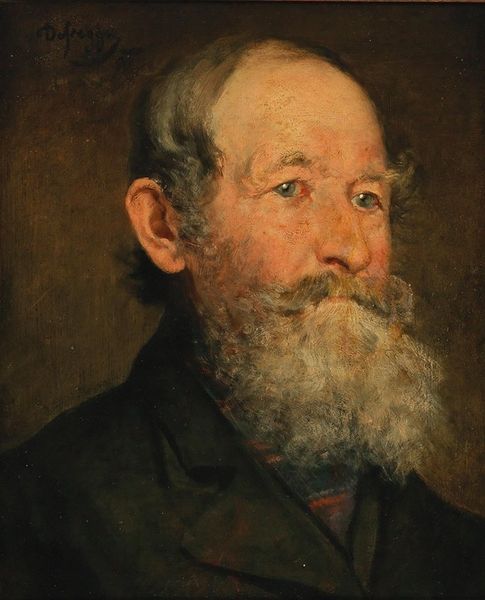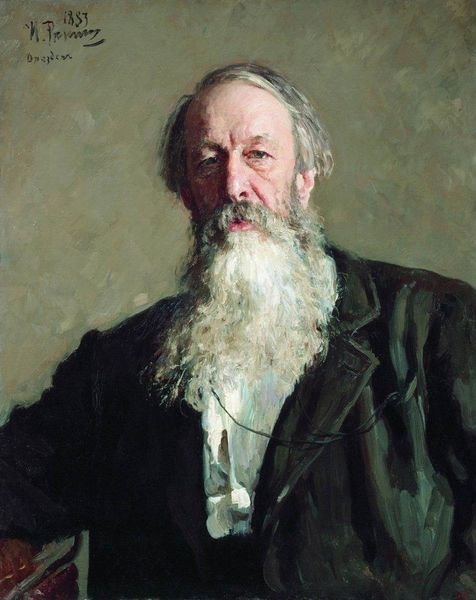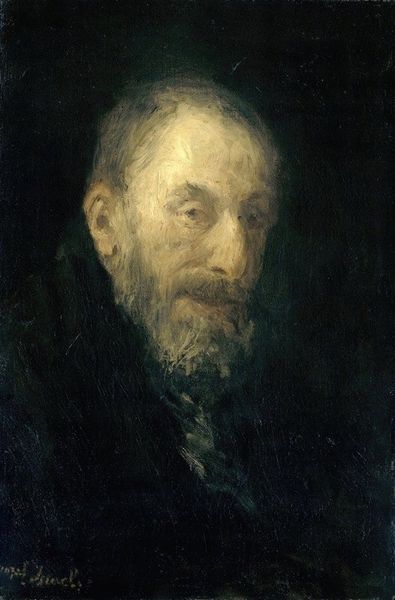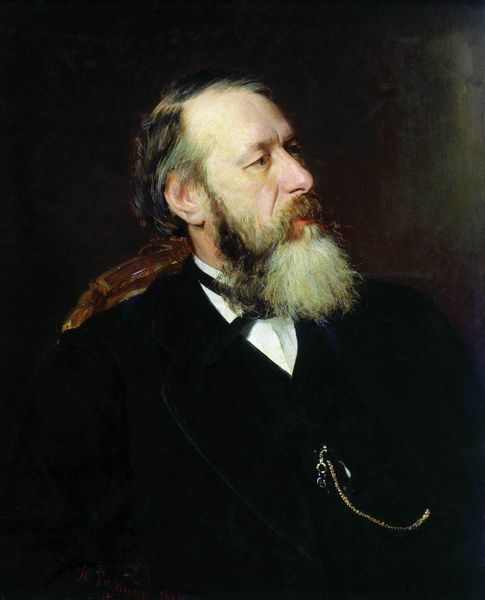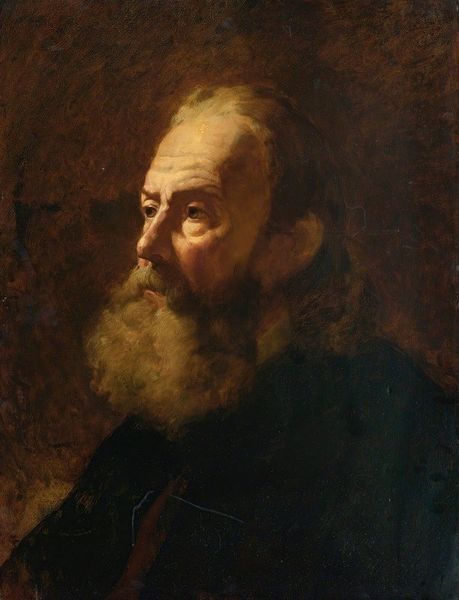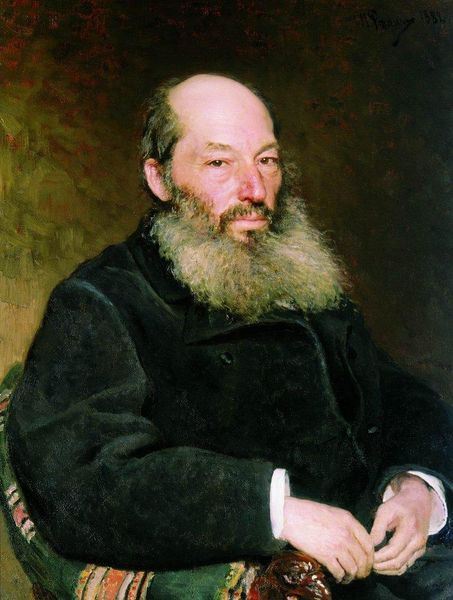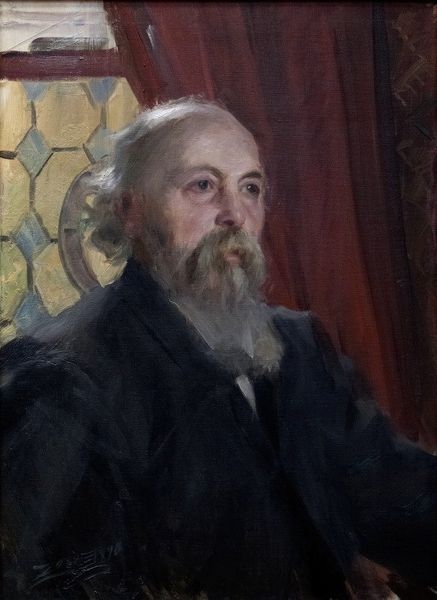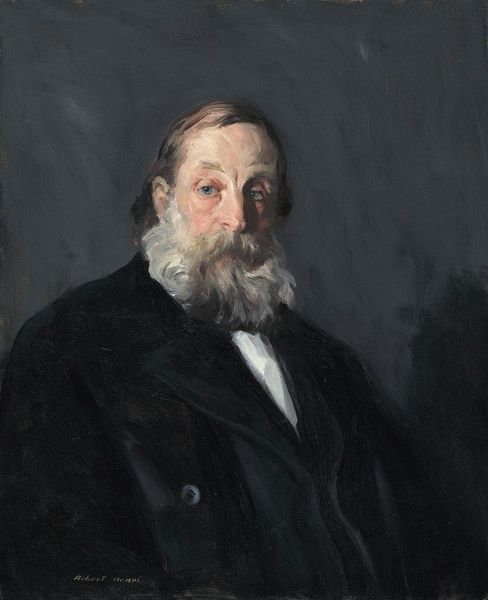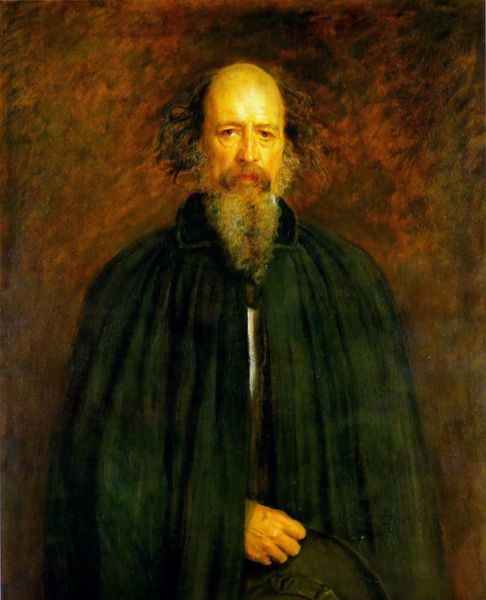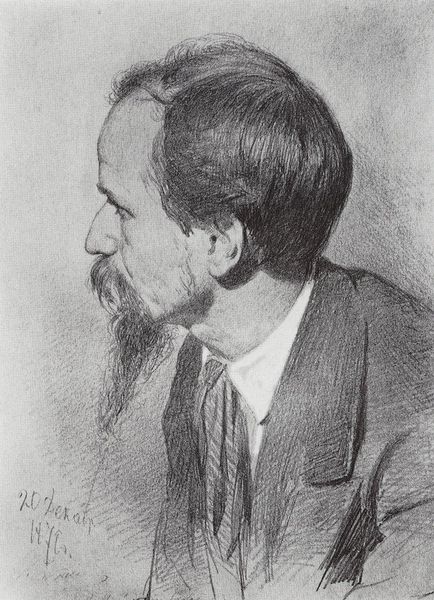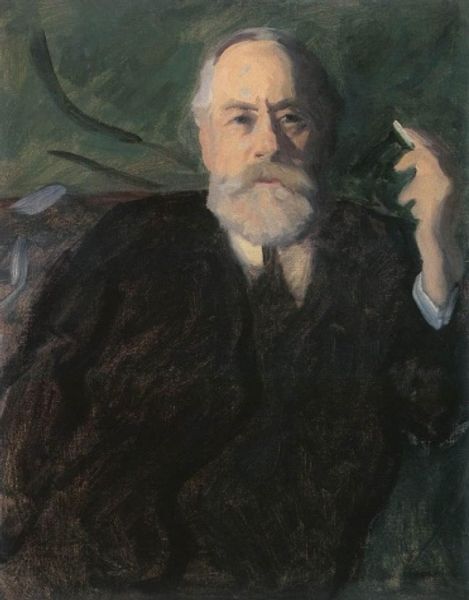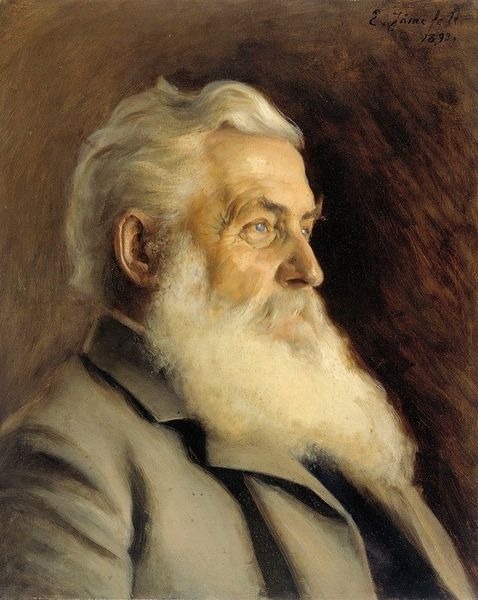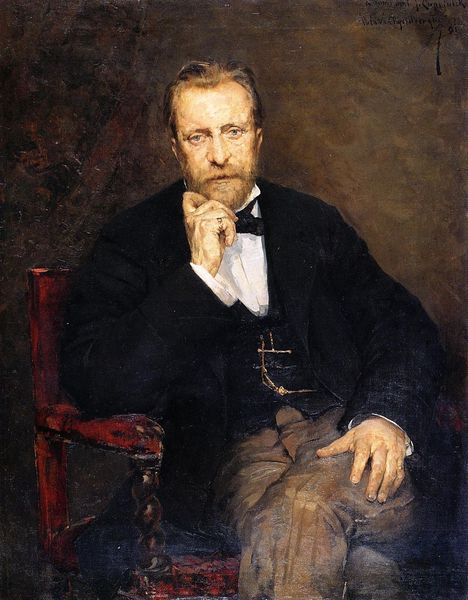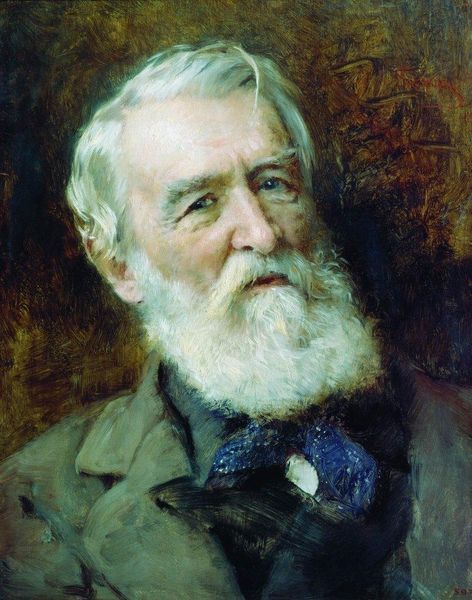
Copyright: Public Domain: Artvee
Curator: This portrait, rendered in oil paint, presents a striking image. Anton Romako completed “Der Tiermaler Karl Reichert” sometime between 1873 and 1876. Editor: The rapid, almost frenzied brushstrokes are what first grab me. The materiality practically leaps off the canvas; it's restless, almost unfinished. I want to know what drives that energy. Curator: Look closely at Reichert's beard, a profusion of russet tones. The beard serves as a visual symbol for wisdom and experience, aligning with the respect that was commonly afforded to animal painters at this period. They captured moments in nature. Editor: Respect yes, but also perhaps commercial value? Think about the rising bourgeois class wanting images of idealized nature and their own beloved animals! That thick impasto must have also served to elevate the image. I would want to know how his painting studio and the art market functioned. Curator: Indeed. The earth tones and lack of adornment place all of the focus on the man himself. Consider that a certain raw energy was becoming linked with authenticity at this time. The portrait seems almost an icon to creative energy. Editor: Yet this alleged "authenticity" is, I would argue, carefully constructed by Romako. The impasto, the rough brushwork... It serves to show skill as well. The rough and expressive handling of the medium makes it seem as though its an ‘honest’ emotional outpour, while simultaneously marketing a technique, something almost ‘wild’ and implicitly valuable. Curator: An interesting counterpoint. Perhaps Romako subtly critiques the art market itself through Reichert's thoughtful but slightly melancholic gaze. Reichert embodies the tension between artistic expression and commercial constraints, as expressed in material means and production. Editor: Or maybe the constraints shaped the means? Curator: Food for thought. Romako definitely offers more questions than easy answers, though the symbolism provides many insights. Editor: Agreed. I think the appeal resides in the interplay between labor and representation, between market forces and Romako's handling of the paint itself.
Comments
No comments
Be the first to comment and join the conversation on the ultimate creative platform.
